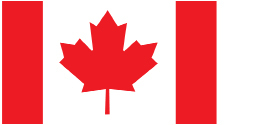Module 4
1. Module 4
1.12. Page 7
Module 4: Area
Lesson Summary

The Canadian flag is recognized by people all over the world. The flag is not only flown within Canada, it is often printed on products that Canada exports around the world.
Did you know that the flag is twice as long as it is wide and that the white square in the middle has the same area as the two vertical red stripes added together?
This lesson dealt with areas of simple shapes and the design of composite figures, like the Canadian flag.
In this lesson you explored these questions:
- How are the areas of common shapes, such as parallelograms and triangles, calculated?
- How are the areas of composite shapes involving rectangles, squares, parallelograms, and triangles determined?
Check your level of understanding of the materials covered in this lesson by completing “Lesson 2 Traffic Lights.” If you select an amber or red traffic light in the multimedia piece, you will receive information about additional work you can complete to improve your understanding of the topics. Complete the suggested work before you proceed to the Lesson 2 Assignment. If you experience difficulty, contact your teacher before starting the Lesson 2 Assignment.
You explored the area formulas for rectangles, squares, parallelograms, and triangles. You applied these formulas to find the areas of composite figures made up of these common shapes.
 Assignment
Assignment
Retrieve the Lesson 2 Assignment Booklet you saved in your course folder at the start of this lesson. Complete the Assignment Booklet. Resave your Assignment Booklet in your course folder and submit a copy to your teacher for assessment.
Unit 2 Project
Before you move on to the next lesson, you should return to the Unit 2 Project and apply these skills to the tasks in your project related to the areas of common shapes.